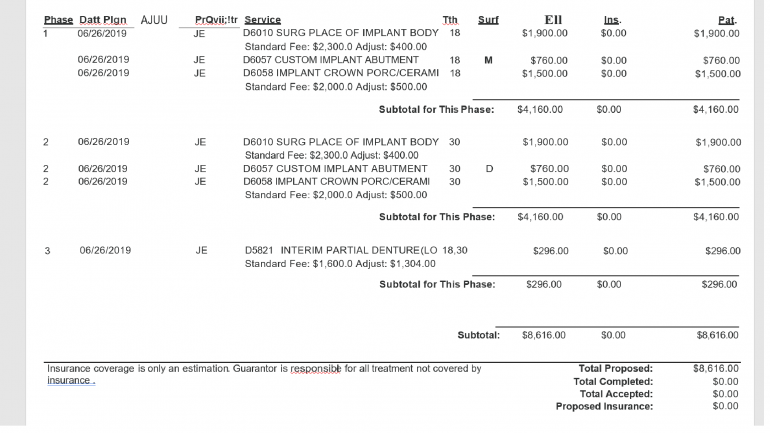
Dental Code D7290: Surgical repositioning of teeth
Dental Code D7290 refers to a specific dental procedure known as surgical repositioning of teeth. This treatment option is designed to address cases where teeth are severely misaligned or out of position.
Detailed Information about the Procedure and Steps
Dental Code D7290 refers to a specific procedure in dentistry known as surgical repositioning of teeth. It is a specialized dental treatment option designed to address cases where teeth are severely misaligned or out of position. This code is used by dental professionals to accurately identify and bill for this particular procedure.
Surgical repositioning of teeth involves a surgical approach to move the teeth into proper alignment. It is typically performed by an oral surgeon or a dentist with advanced training in oral surgery. This procedure is recommended when less invasive orthodontic methods, such as braces or aligners, are not sufficient to correct the misalignment.
The purpose of surgical repositioning of teeth is to improve dental aesthetics, functionality, and overall oral health. By repositioning the teeth, the procedure aims to create a harmonious bite, enhance the alignment of the teeth, and improve the overall balance and symmetry of the smile.
Comprehensive Examination and Treatment Planning
Prior to undergoing the surgical repositioning of teeth, a thorough examination is conducted by a qualified dentist or orthodontist. This examination encompasses an assessment of the teeth, gums, and jawbone. X-rays and digital imaging may be utilized to obtain a clear picture of the misalignment and determine the extent of the dental issue. Based on the findings, a personalized treatment plan is meticulously developed to address the specific needs of the patient. This ensures that the surgical repositioning procedure is tailored to achieve the best possible outcome.
Preparing the Patient for Surgery
Proper preparation is essential for the success of the surgical repositioning procedure. The dentist or orthodontist initiates this process by thoroughly explaining the treatment plan to the patient and obtaining informed consent. The procedure, potential risks, and expected outcomes are clearly discussed to ensure that the patient has a comprehensive understanding. Additionally, any necessary dental impressions or molds are taken to aid in the fabrication of customized appliances or orthodontic devices that will be used during the surgery. In some cases, a temporary orthodontic appliance may be placed to assist in aligning the teeth before the surgery, thereby optimizing the final results.
Anesthesia and Incision
To ensure a painless experience, the patient is administered local anesthesia on the day of the surgery. The anesthesia effectively numbs the area being treated, ensuring that the patient remains comfortable throughout the procedure. Once the area is adequately numbed, a small incision is made in the gum tissue near the targeted teeth. This precise incision allows the dentist to gain access to the underlying bone and successfully reposition the teeth.
Repositioning the Teeth
Using specialized instruments, the dentist carefully and skillfully repositions the teeth according to the predetermined treatment plan. This may involve gently moving the teeth horizontally, vertically, or in any required direction to achieve the desired alignment. During this step, the dentist takes precise measurements to ensure that the teeth are repositioned in harmony with the surrounding teeth and the patient's bite. The goal is to achieve optimal dental aesthetics, functionality, and overall oral health. Repositioning the teeth during the surgical procedure requires the dentist to employ specialized instruments specifically designed for this purpose. These instruments allow for precise manipulation of the teeth, ensuring accurate and controlled movements. With a high level of skill and expertise, the dentist carefully navigates the teeth into their new positions as outlined in the predetermined treatment plan.
Horizontal, vertical, and rotational movements may be employed during the repositioning process, depending on the specific needs of the patient. The dentist applies gentle and controlled forces to guide the teeth into the desired alignment. By carefully adjusting the position of each tooth, the dentist aims to create a harmonious relationship between the repositioned teeth, the surrounding teeth, and the patient's bite.
Suturing and Postoperative Care
Once the teeth have been repositioned, the dentist sutures the incision site to promote proper healing. Sutures are used to bring the gum tissue together and facilitate the natural healing process. The patient receives detailed postoperative care instructions to ensure a smooth recovery. These instructions encompass proper oral hygiene practices, pain management techniques, and dietary restrictions. It is crucial for the patient to follow these guidelines diligently to promote healing and achieve the best possible results. Additionally, follow-up appointments are scheduled to monitor the progress of the treatment and make any necessary adjustments, ensuring the long-term success of the surgical repositioning procedure.
Summary of Dental Code D7290
Dental Code D7290, the surgical repositioning of teeth, is an effective and precise treatment option for correcting severe misalignment. Through a comprehensive examination, personalized treatment planning, administration of anesthesia, precise incisions, meticulous repositioning of the teeth, and thorough postoperative care, dental professionals can help patients achieve improved dental aesthetics, functionality, and oral health. If you are considering this treatment, it is advisable to consult with a qualified dental professional who can provide personalized advice based on your specific needs.
Ready to revolutionize your dental care savings? Dr. BestPrice is your trusted companion for a brighter, budget-friendly smile.
